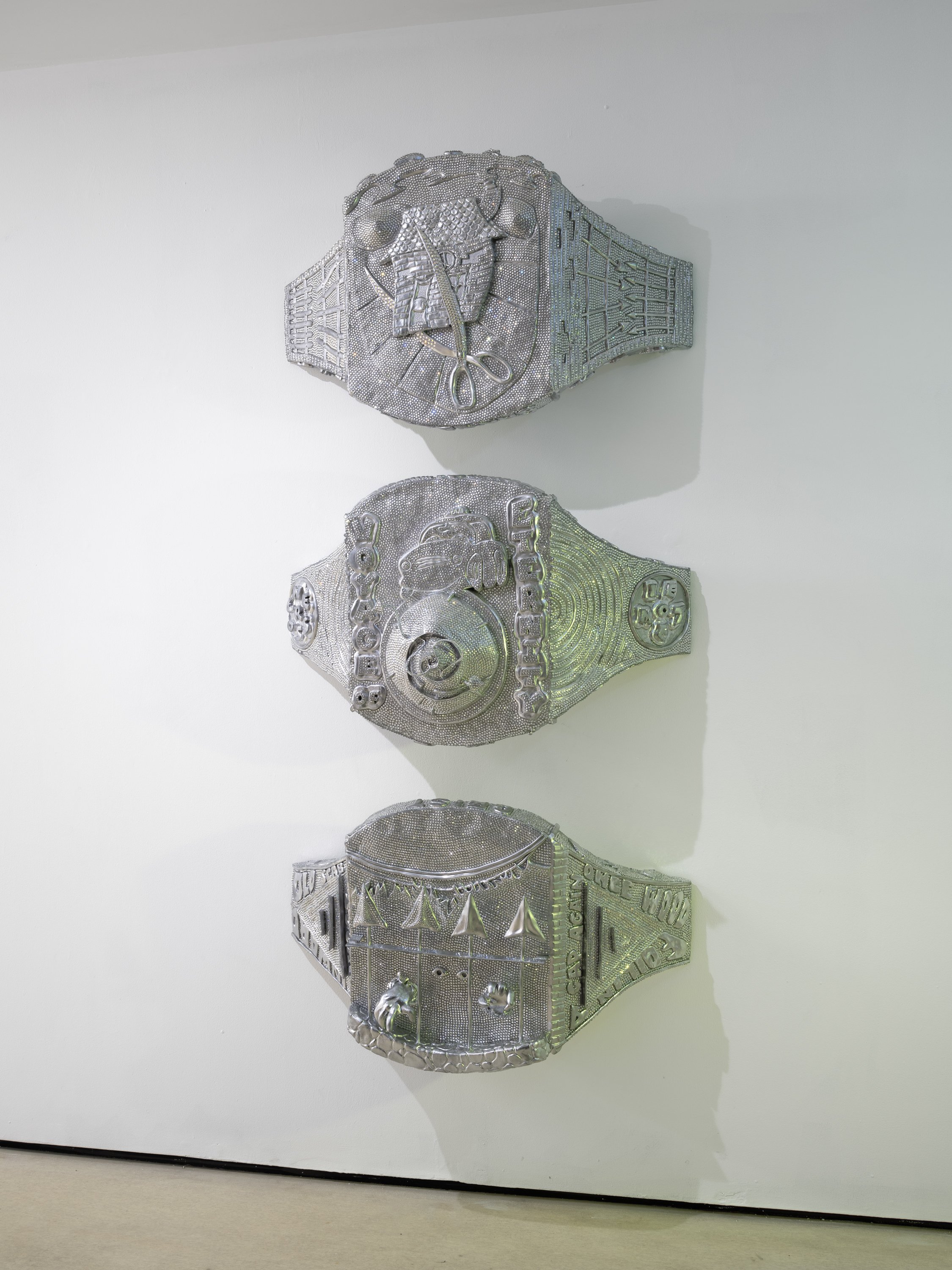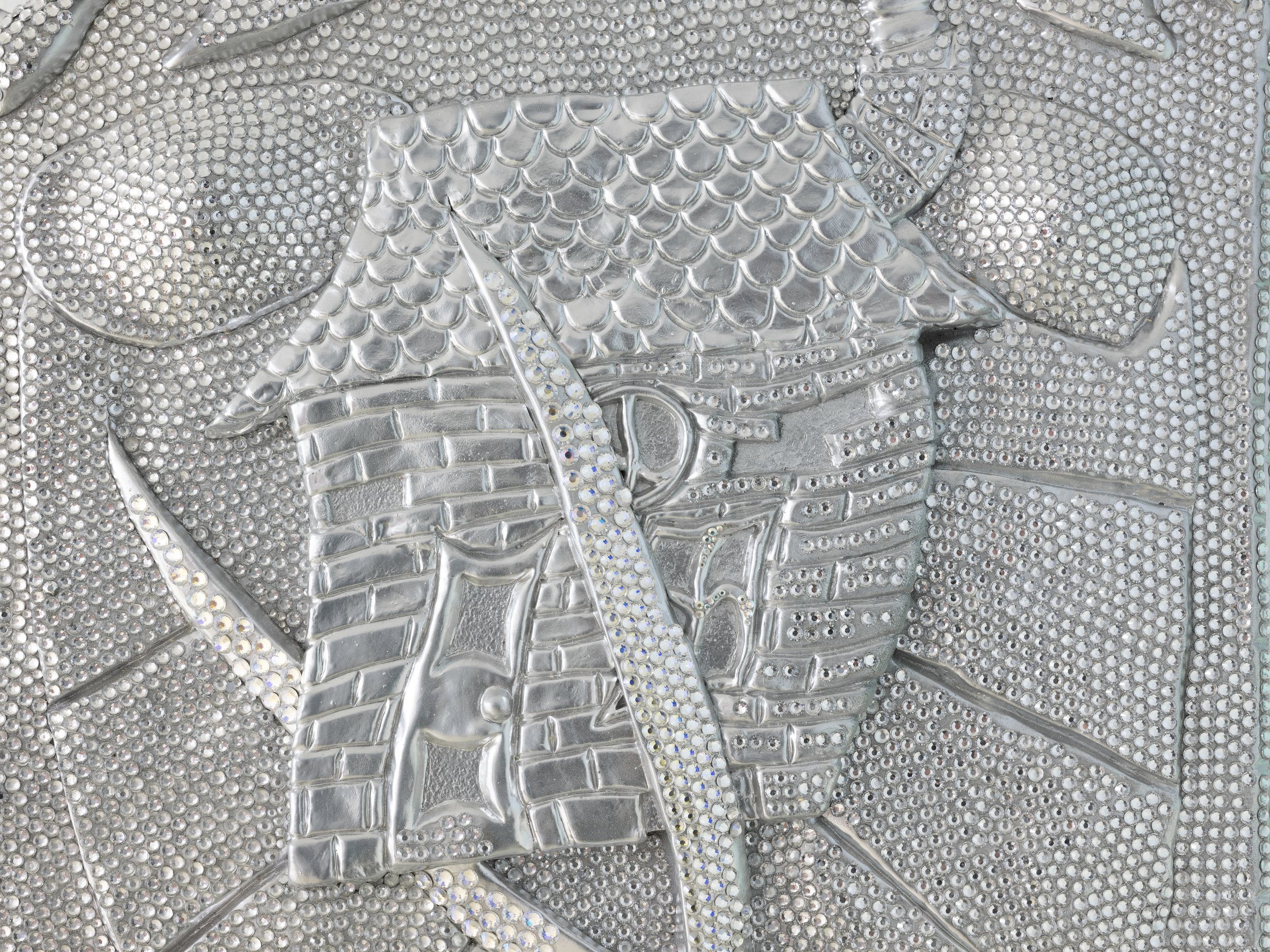COOK IN THE SLAUGHTERHOUSE
Daniel Burley
20 May – 02 July 2023
Introduction
Written by Duine Acasă
Cook In The Slaughterhouse looks to obtain a type of abstraction. This idea of abstraction is not in the way that the word is generally used in contemporary art at this time - as a signifier for non figuration - a lack of recognisable objects within the work. Abstract paintings, for example, though ascribed the title of abstract, cease to be abstract, because they are a recognisable and verbalisable concept. Instead, the work in Cook In The Slaughterhouse attempts to generate a type of abstraction through making an object between and within objects which, accumulatively, is unrecognisable and unplaceable. The work hybridises elements which appear as opposed to one another, however in this it attempts to avoid absurdist juxtaposition (placing objects oxymoronically or with causticism to the meaning of the objects themselves (emphatical oddity), or surreal-y - engaging in a displacement of the psyche into indicators. So in avoidance of this it uses an intertwining logic, even if this logic cannot be verbalised, it attempts to slip in between cracks. It very likely fails in this attempt, as people love to unpick notions of abstraction and categorise them, and linguistically solidify them into something opaque and comprehensible. However there is the notion of building a puzzle which the puzzle-maker is unable to solve which exists in this work. As puzzle-maker, the artist cannot grapple with the centre of the work. It's conceptual synopsis or Maxim of interest is Centrifugal. It explores transiently: conatus, phenomenology, proto existentialism, casuistry, absurdist Eschatology, semiotics and lots of other philosophically/psychologically/sociologically pertaining rants in the musings of the narrator in the audiobook piece, which shares the title of the show.
The work includes a lot of references to consumption, tricksterdom, death and eternity. For example the self checkout becoming a metaphor for suicide, if checking out is used to describe dieing, then a self checkout could be to take one's own life.
3 diamond rings half portruding from the wall in a Judd-esque tower - 3 being a numerical motif of the show. The rings and the self checkout as clear references to consumerist Capitalism, on it are images:
A house being cut in-two by a pair of scissors, framed by a grinning pavement. On the sides are written "Poros", "Aeternus", "Aporia".
On another, an out of control clock with flailing hands, hanging from the lip of a grinning taxi, around which is written "Voyage of Eternity" and letters which anagramatically spell "necross" on one side and "I emote" on the other and together spell "necrotomieses", and on the sides the text; "odd", "21", "even".
The third depcts a fenced hedge with a figure grasping between the rails and the words written in two infinity circles: "Old Scab Looks Inward" and "A gap again once wood foil in". On the sides are written; "bored", "geist", "fallacy"
There is a painting of balloons with a skull emblazoned upon one of them. Partially in reference to and named after a two sentence story which the artist wrote during the show's conceptualisation period:
"A person dressed as the grim reaper took caterpillar shaped balloons to a kids party in Oklahoma and accidentally sat on the family cat, and the father had a fetish of beastial sadism and crush paraphilias and spontaneously ejaculated as he shouted 'Captain!' Which was the cat's name. It was like a religious epiphany for him."
There is a bookless IKEA BILLY bookshelf attached with hinges to the wall and with a D handle attached to its side - creating a dysfunctional make-shift secret passageway.
And opposite it, a clown shaped speaker reciting the audiobook with glowing blue eyes and a cartoonish malevalent countenance.
In their depiction objects become warped artificially and estranged from their original forms.
There is a tendency within previous self authored deductions of the artist's practice to unpick work semiotically and analyse the intention and inter-relating levels of meaning within the work in order to expand upon a central Rubric, or conceptual identity of the work. In this show there has been a semiotic attempt to disrupt this pattern, throwing spanners in the works which feel specifying to the its potential readings, but also confusing; building a system which eats itself. There is, however, a consistent clash between bleakness and emptiness bordering on the horrifying.
Daniel Burley lives and works in the UK (born 1992), he grew up in London, Hackney in the early 2000s, during a grime, garage and gang influenced cultural zenith. He studied a Foundation at Central Saint Martins graduating 2012, a degree at Slade School of Fine Art graduating 2016 and a Post Graduate at Royal Academy Schools graduating 2019. During his second year at the RA he had his first solo show in Vienna at DELF Projects. He had a solo show at Gao Gallery in 2020 and another solo show at Gao in 2021, in 2022 Burley had a large duo show in Italy at Palazzo Monti, which was the culmination of a two month residency and also a third solo show at Gao. He is currently working on a show at Quench Gallery in Margate due to open in May 2023.
Burley utilises cultural tropes and archetypes, manipulating them to investigate compound ideas, often exploring interpersonal or societal relations, re-inventing the function of a commonly understood idea or cultural phenomenon.
Burley works with mediums indiscriminately, in sculpture, video, sound, painting, installation, writing, performance, etc, often treating world building as a material to be disrupted and undermined: as a mode of communication exterior to the substance - generating loose conceptual spheres for ideas and ideological stances to be explored within.































